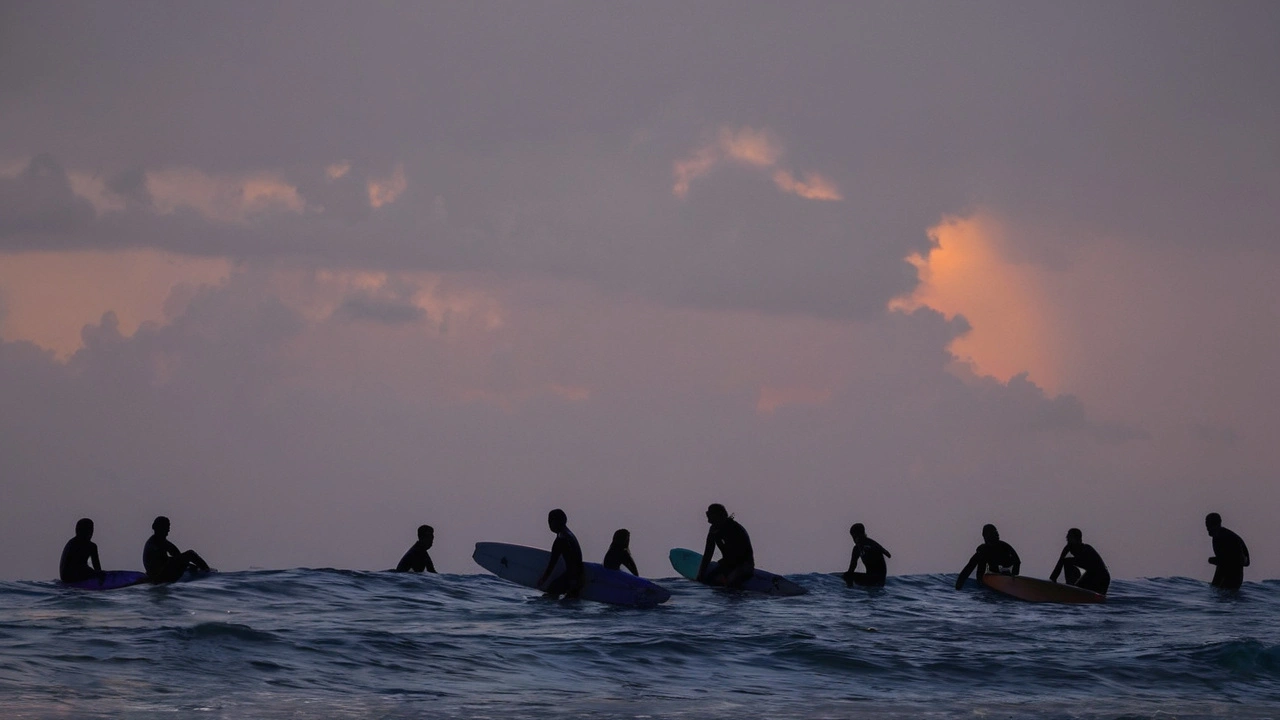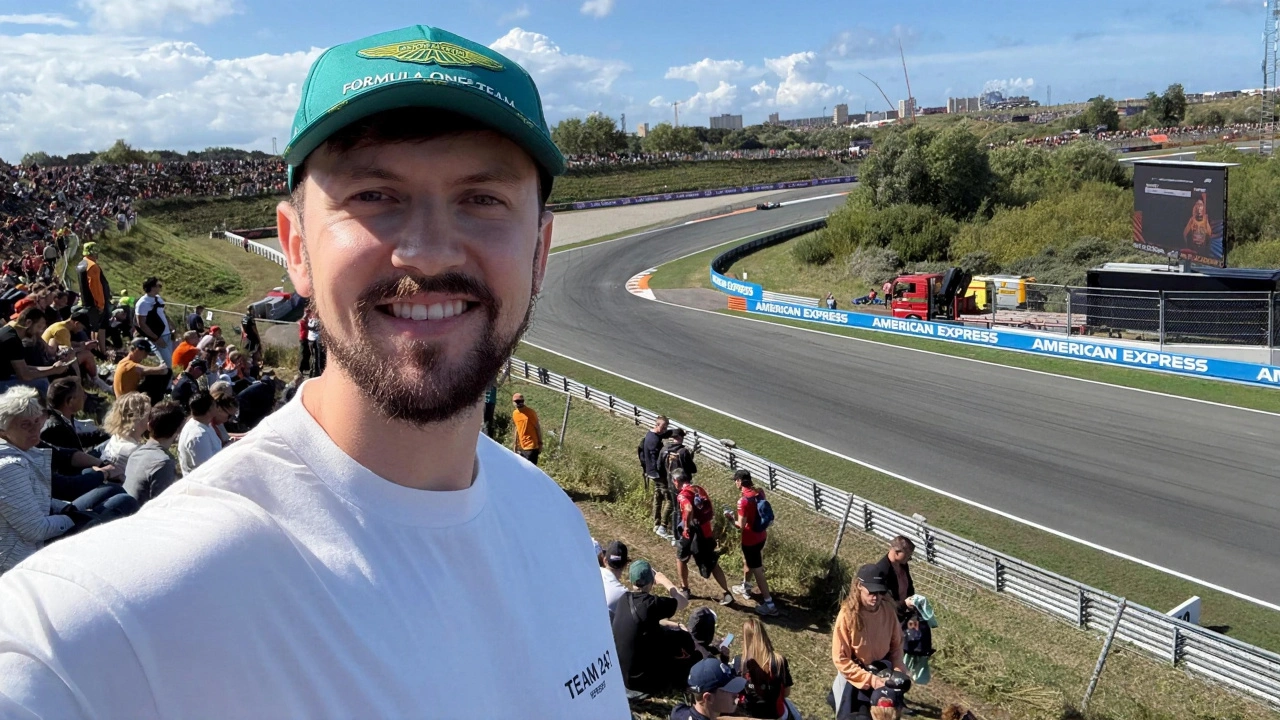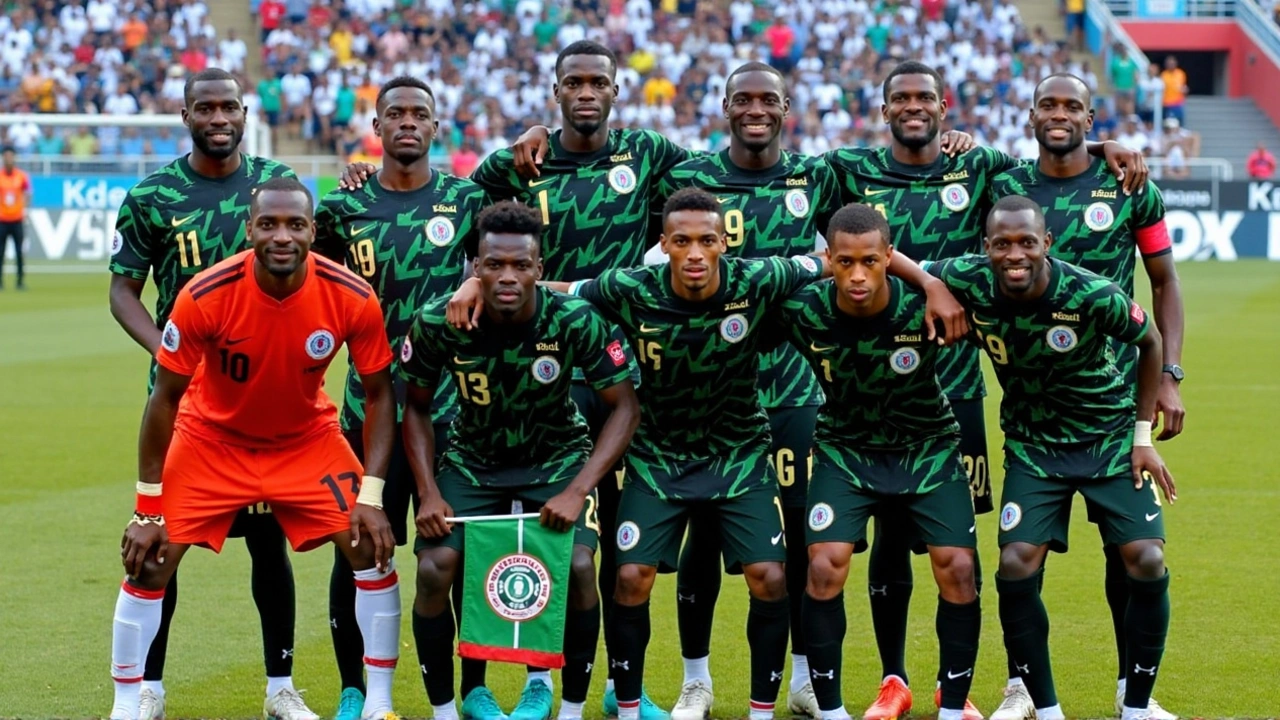
The Intricacies of Surf Forecasting for the Paris Olympics
The Paris Olympics have brought the surfing competition to the idyllic yet unpredictable waves of Tahiti. Surf forecasting plays a pivotal role in orchestrating the event, ensuring that athletes face the most favorable wave conditions possible. By understanding wave behavior and breaking patterns, meteorologists and oceanographers collaborate to predict the optimal days for surfing competitions. This intricate process involves tracking winds, storms, and various atmospheric conditions that generate waves. Although advancements in software tools have been made, surf forecasting remains semi-automated and retains an element of uncertainty.
As the sport relies heavily on natural water elements, accurate forecasting becomes essential. Surfers, spectators, and event organizers all depend on these predictions to schedule the event within a ten-day window, optimizing the four days set for the actual competition. By continuously monitoring evolving weather patterns and wave dynamics, forecasters aim to offer the best possible conditions for these elite athletes.
Technological Tools and Challenges
The technological arsenal for surf forecasting has come a long way but is not entirely foolproof. Satellites, ocean buoys, and computer models track and simulate wave behavior with impressive precision. Meteorologists access real-time data about wind speeds, storm trajectories, and ocean currents to make educated guesses about wave conditions. But even in the age of high-tech solutions, nature retains its unpredictability. Some surfers welcome these powerful waves, while others find them daunting and frustrating.
Forecasting teams analyze myriad data points, inputting them into sophisticated software to model future conditions. While these tools predict when waves will be ideal, they cannot completely eliminate the unpredictability inherent in nature. These high-stake predictions require a blend of science and human intuition to best manage the uncertain and dynamic conditions of the ocean.
The Onset of Climate Change
While the short-term focus of surf forecasting remains on wave prediction, long-term concerns loom largely due to climate change. Rising sea levels and coastal erosion could gradually alter wave dynamics and coastal geography, impacting future surfing events. These changes are anticipated to be long-term rather than immediate, yet they introduce another layer of complexity to an already intricate process.
Forecasting must now consider these gradual, yet impactful, shifts in climate that could affect wave formation and behavior over extended periods. Incremental changes in water temperature, sea levels, and storm frequency all add new variables to forecasting models, requiring continuous adaptation and refinement.
The Structure of the Competition
The surfing competition in Tahiti is structured into six rounds, starting with heats where competitors aim for a maximum score of 20 points. The first round has seen surfers perform under varied conditions, with some advancing directly to the third round, showcasing the importance of adaptability. It’s not just about skill but also the ability to adjust to the unique wave conditions on any given day.
As the competition progresses, the stakes get higher. By the third day, competitors faced particularly challenging conditions due to an approaching storm, leading to the postponement of women’s events. This highlights the critical nature of accurate surf forecasting in ensuring fair and competitive conditions.
From the third round onward, the competition adopts a single-elimination format. This heightens the anticipation and excitement, culminating in the final day where the gold medal winners are determined. Strategy and performance are closely tied to ever-changing wave conditions, adding an additional layer of tension to the event.
Surfer Sentiments and Logistical Arrangements
The conditions have elicited mixed feelings among competitors. While some revel in the powerful waves, viewing them as an opportunity to showcase their skills, others find the unpredictability difficult and at times frustrating. This duality reflects the inherent challenge of surfing as a sport deeply enmeshed with natural elements.
Behind the scenes, unique logistical arrangements add another layer of intrigue to the competition. For instance, surfers are accommodated on a cruise ship anchored near the venue. This unusual setup offers proximity to the competition site, minimizing travel time and allowing athletes to rest and prepare efficiently. While this adds convenience, it also requires precise coordination and planning, embodying the complexity and grandeur of the Olympic Games.
The Paris Olympics surfing competition in Tahiti is a harmonious blend of nature, technology, and human endeavor. As surf forecasting continues to evolve, the symbiotic relationship between science and sport will only deepen, providing thrilling experiences for athletes and audiences alike. The event signifies much more than merely riding waves; it represents the relentless pursuit of excellence amid the ever-changing forces of nature.
Conclusion
Surf forecasting is an ever-advancing field crucial to the success of the Paris Olympics surfing competition in Tahiti. By leveraging technology and human intuition, forecasters strive to predict optimal wave conditions, balancing the whims of nature with the demands of competition. This technological prowess, combined with the thrill of the event, creates unforgettable experiences for athletes and fans. As climate change introduces new variables, the relationship between forecasting and surfing will continue to evolve, promising an exciting future for the sport.





Hemanth NM
August 1, 2024 AT 18:20Surf forecasts are the silent heroes behind every wave we ride.
rin amr
August 5, 2024 AT 14:00When we discuss surf forecasting, it's not merely a data exercise; it's an art form that separates true connoisseurs from the casual observers. The precision of satellite buoys and advanced modeling reflects a commitment to excellence that the average fan often overlooks. Yet, despite the high‑tech veneer, unpredictability remains the ultimate judge, reminding us that nature still holds the final word. It's fascinating how these scientists blend raw numbers with intuitive feels to craft a schedule that feels almost poetic.
Jai Bhole
August 9, 2024 AT 09:40Our nation’s surfers deserve the best waves, not some foreign tech babble that can’t grasp our spirit. The forecasts may claim objectivity, but they lack the fire that Indian riders bring to the reef. You’ll see that the real power comes from relentless training, not from a model that sometimes (definately) gets it wrong. We won’t let a glitch in data dictate our medals, we’ll adapt and dominate.
Erica Watson-Currie
August 13, 2024 AT 05:20Surf forecasting blends science and intuition it guides the competition while respecting the ocean’s mood.
Mark Pelletier
August 17, 2024 AT 01:00The evolution of surf forecasting mirrors the broader march of technology into realms once thought mystical. From early tide tables to satellite‑linked wave models we have witnessed a relentless push for precision. Modern buoys transmit real‑time wind and swell data that feed complex algorithms. These algorithms simulate wave formation across thousands of square kilometres of the Pacific. Yet the ocean remains a chaotic system that resists full quantification. Forecasts therefore become a partnership between machines and seasoned analysts. Human intuition reads subtle shifts in pressure systems that no computer can yet decode. This blend ensures that event organizers can lock in windows that maximize athlete performance. The Paris Olympics surfing schedule, for instance, relies on these predictions to allocate heats. When a storm approaches, forecasters adjust timing to keep conditions fair. The uncertainty inherent in weather also adds a layer of drama that fans love. Competitors must stay adaptable, shifting tactics as the swell evolves. Climate change introduces longer‑term variables that will reshape coastal wave dynamics. Rising sea levels may alter reef break patterns, forcing future models to incorporate new baselines. In sum the science of surf prediction continues to grow, driven by curiosity and the relentless desire to ride the perfect wave.
Cheyenne Walker
August 20, 2024 AT 20:40One practical tip for athletes is to monitor the short‑term buoy data alongside the longer‑range model outputs; the synergy often reveals micro‑fluctuations that can be the difference between a 19.5 and a perfect 20.0 score. Organizers typically publish a “swell window” chart 48 hours in advance, which outlines the expected peak period and direction; aligning your heat strategy with that window can maximize ride quality. Remember that wave period influences speed-a longer period generally yields faster, more powerful waves, while a shorter period may produce choppier, less rideable conditions. Also, keep an eye on wind gusts; a sudden offshore breeze can clean up a wave face, whereas onshore wind can quickly deteriorate it. Finally, as climate trends subtly shift baseline swell patterns, staying adaptable and maintaining a strong fundamentals base will serve athletes well in the coming decades.
Jo Simpkinson
August 24, 2024 AT 16:20Oh sure, let’s all bow to the meteorologists for their crystal‑ball powers, because a barely noticeable wind shift truly decides who walks away with gold. The drama they create feels almost theatrical, doesn’t it? And all those high‑tech satellites? Just dazzling props in a show where nature still calls the final shot.
Darrell Kuykendall
August 28, 2024 AT 12:00Wow, what an incredible display of teamwork, data, and sheer determination, folks! The way those forecasters parse every gust, every swell, every minute‑by‑minute change, is nothing short of awe‑inspiring, truly. It’s a reminder that behind every epic ride lies a mountain of numbers, charts, and endless hours of analysis, all to give us that perfect moment on the board!
Dean Obijekwu
September 1, 2024 AT 07:40Staying flexible with the schedule can actually boost your confidence, trust the process and you’ll find your rhythm when the waves finally align.
finlay moss
September 5, 2024 AT 03:20Honestly teh data is pretty solid, but sometimes the models can be off by a few seconds, which might seem minor but can totally change the line a rider takes. Just keep an eye on the updated feed, it’s not rocket science.
Carl Gough
September 8, 2024 AT 23:00Riding a monster swell feels like dancing with a wild beast-electric, untamed, and absolutely glorious. When the forecast nails a perfect set, the ocean erupts into a fireworks display of power, and every surfer becomes a conductor of that raw energy.
Rebecca Hayes
September 12, 2024 AT 18:40From a coaching perspective, analyzing the break period and peak period variance gives you the edge in heat strategy. If the swell window closes early, you pivot to offensive maneuvers; if it opens late, you conserve energy for the big sets.
Jason Underhill
September 16, 2024 AT 14:20Sure, forecasts are “accurate enough,” but let’s not pretend they’re flawless :)
Kirsten Wilson
September 20, 2024 AT 10:00When you think about wave patterns you realize they’re like life-constantly shifting, never the same, and sometimes you just gotta ride the vibe.
Michelle Roque
September 24, 2024 AT 05:40Looks like the surf’s gonna be alright, just gotta wait and see.
Killian Lecrut
September 28, 2024 AT 01:20Great job, Mother Nature, you really know how to keep the athletes on their toes-thanks for the ‘surprise’ sets!
Subi Sambi
October 1, 2024 AT 21:00Your lofty prose misses the gritty reality that these forecasts are just numbers, and the athletes still have to fight the sea. No amount of fancy language changes the fact that a mis‑prediction can wreck a whole heat.
Joshua Rainey
October 5, 2024 AT 16:40While you celebrate the progress, remember that every model still fails to capture the chaotic soul of the ocean; we’re still guessing more than we know.